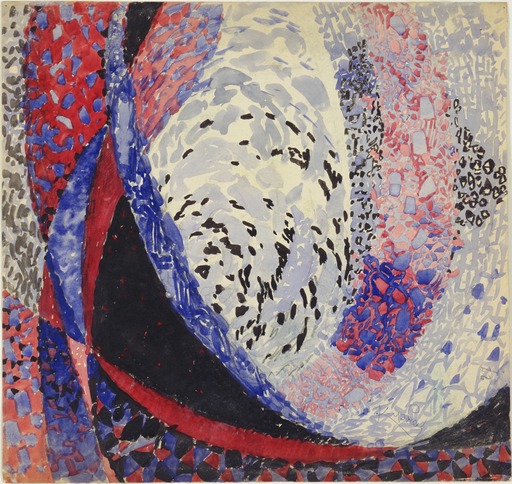1912
Amorpha: Fugue in Two Colours
author
Frantisek Kupka
description
The Museum of Modern Art, New York (the USA).
Gouache and ink on paper.
It was one of the very first abstract paintings that were publicly exhibited in Paris. Experts believe that Kupka came to a cycle of such compositions gradually, starting in 1907 with a drawing of a girl holding a ball in her hand. He conveyed her movements from different angles as if she was going to play or dance with this object. Later, more and more schematic images of circular motions were developed; this ultimately resulted in a series of completely abstract works. The colour stripes painted by the method of pointillism have a limited palette of red, blue, black and white. The radically changeable relationships that are established between the foreground and background, between the line and the plane indicate that the author abandoned the aesthetic conventions of perspective. The cycle was made as a study for his manifesto of painting and shown at the Autumn Salon of 1912 at a turning point in the history of modernist abstraction.
